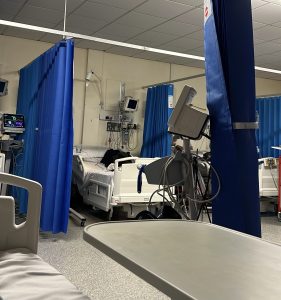
The future of medical diagnoses is simpler, cheaper, more accessible, and less intrusive. Imagine using detecting lung cancer, Sexually Transmitted Diseases, liver cancer, diabetes, bowel cancer, and tuberculosis using nothing but the patient’s breath. That is the future that ANCON Medical are working towards. Identifying chronic diseases at their earliest stages will become easily achievable once a technology that is both simple and affordable can be rolled out.
ANCON’s secret to making this accessible to everyone is NBT technology or Nanoparticle Biomarker Tagging. With this technology, doctors can detect the presence of chronic diseases in a patient by using so-called bio markers – a mixture of molecules emitted that is unique to every disease. The biomarkers are as good as a signature. They are specific to certain diseases.
Hidden within every breath that comes out of our body are molecules emanating from our body fluids or the bacteria that live within the body. Biomarker molecules are harder to detect because they come out in small quantities compared to the oxygen, hydrogen, and carbon that are naturally found in the air.
To detect those hard to find molecules, we use Nanoparticle Biomarker Tagging; which is capable of detecting the biomarker molecule even when its concentration is a billion times less than the other molecules in the air. The NBT does this by amplifying the biomarker. Not only is this procedure accurate, but it is also cheaper than conventional methods of diagnosing cancers and it does not have to be done in a laboratory setting. It can even identify one molecule.
When it comes to chronic diseases, early detection is quite literally a matter of life and death. Bowel cancer patients have 90% chance of being alive when the condition is detected early. When the condition is detected after the disease has progressed to stage 4, the survival rate goes down to a dismal 10%.

When it comes to cancers like pancreatic cancer that progress more quickly than other cancers, early detection is even more crucial. During medical examinations, it is difficult for doctors to detect them when they are conducting routine medical checkups. When diagnosed at stage 4, the survival rate is a dismal 1%. Because of the rapid development of the disease, the survival rates have hardly improved over the last five decades. With lung cancer, the survival rates range from 75% in five years for patients diagnosed in stage 1 to 5% for patients diagnosed in stage 4.
One of the greatest strengths of the NBT technology is its versatility. It can be configured to test not only Pancreatic cancer, but also several other diseases that require early detection to ensure a higher survival rate.
Besides diagnosis, the NBT is a potential tool for the management of conditions like diabetes. Once scientists found out that low sugar levels cause a chemical called isoprene to rise within the body, they realised that the technology can free diabetics from the trouble of using blood samples every day to monitor blood sugar.
The technology has the potential to make the diagnoses of chronic illnesses more accessible to millions across the globe. Being portable, it can reach more places. It can be used even without having to employ a medical laboratory; this also makes it more accessible. Finally, the Nanoparticle Biomarker Tagging can be used to detect a wide range of diseases, bringing down the cost of the service.
Even though the technology is still at its experimental stages, it has a great future in the medical diagnoses and management of chronic conditions. With more research and development, technology can be deployed to help people who might be suffering from more than 400 diseases to get early diagnoses. Scientists have already established that there are more than 400 diseases that have biomarkers. Medical service providers can program the device to hunt and detect molecules that indicate the presence of specific diseases.
Please visit the company that I am CEO of to learn more:
https://anconmedical.com/





